Haaretz
340,000 dunams have been set afire across Israel and the West Bank. However, the most harm is actually caused by constant army operations
Zafrir Rinat Oct 7, 2024
The harm to nature in Israel since the outbreak of the Gaza war is the most serious in six decades, according to a report released on Sunday by the Israel Nature and Parks Authority ahead of the war’s one-year anniversary on October 7.
The study found that 340,000 dunams (85,000 acres) of woodland and forest had gone up in flames while many other nature sites had sustained serious damage from Israel Defense Forces traffic. The authority said the figure was a preliminary and partial one, and that in many areas the full extent of the damage had not yet been assessed.
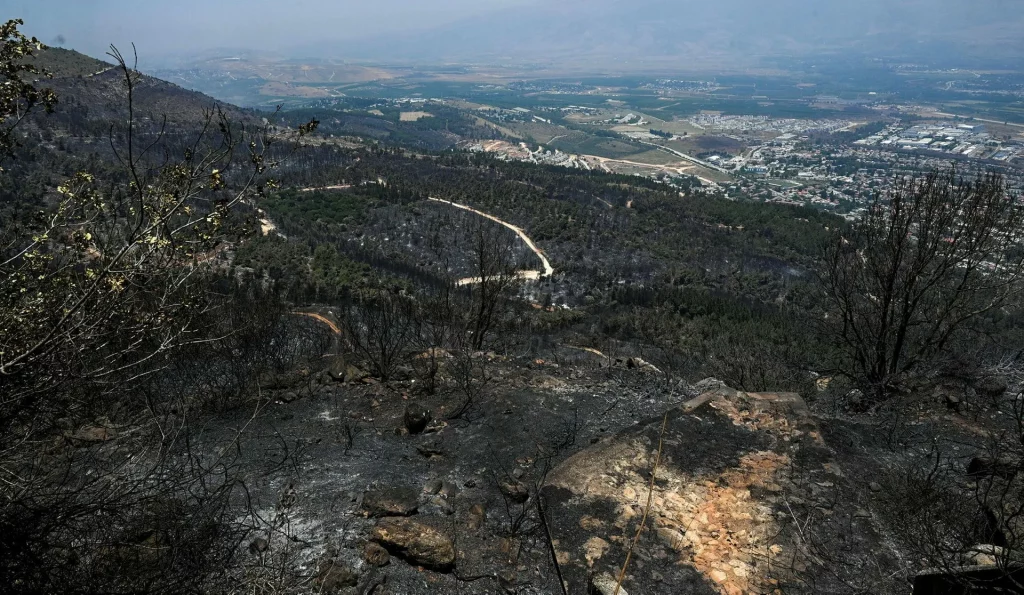
- Israel and Hezbollah’s ‘war of fire’: satellite images reveal the devastating damage
- Can Israel’s scorched north rise from the ashes of Hezbollah’s missile attacks?
- Why Israel’s north won’t be the same after the Gaza war
The report said that over the past year, 196,000 dunams of woodland and forest had been set aflame, a 325 percent increase over a year earlier. The Golan Heights was hit the hardest, with 116,000 dunams going up in flames.

The nature reserve to suffer the worst damage was Nahal Yehudia, where 16,000 dunams were burned. Only because of persistent efforts by firefighters, nature authority rangers and Jewish National Fund personnel prevented even greater damage.
In the West Bank, there was a 167 percent increase in the total area burned, or 107,000 dunams). In the South District there was only a slight increase from 2022-2023 to 6,379 dunams.
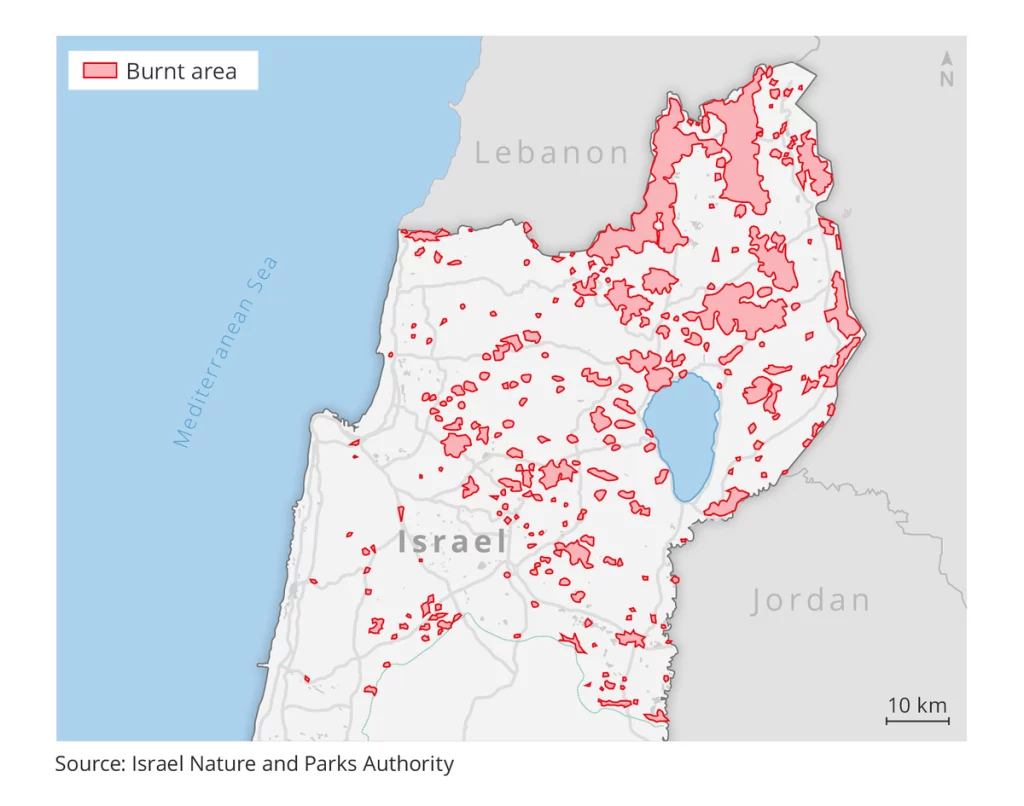
The authority said that the extent of long-term damage hinged on environmental conditions. In large parts of the Golan Heights, low-lying vegetation and herbaceous vegetation is expected to recover quickly. However, damage was done to trees that had developed over many years, so the restoration process will be slower.
There was also extensive damage to the nesting sites of birds of prey and reptile populations, some of which did not have time to escape the fires.
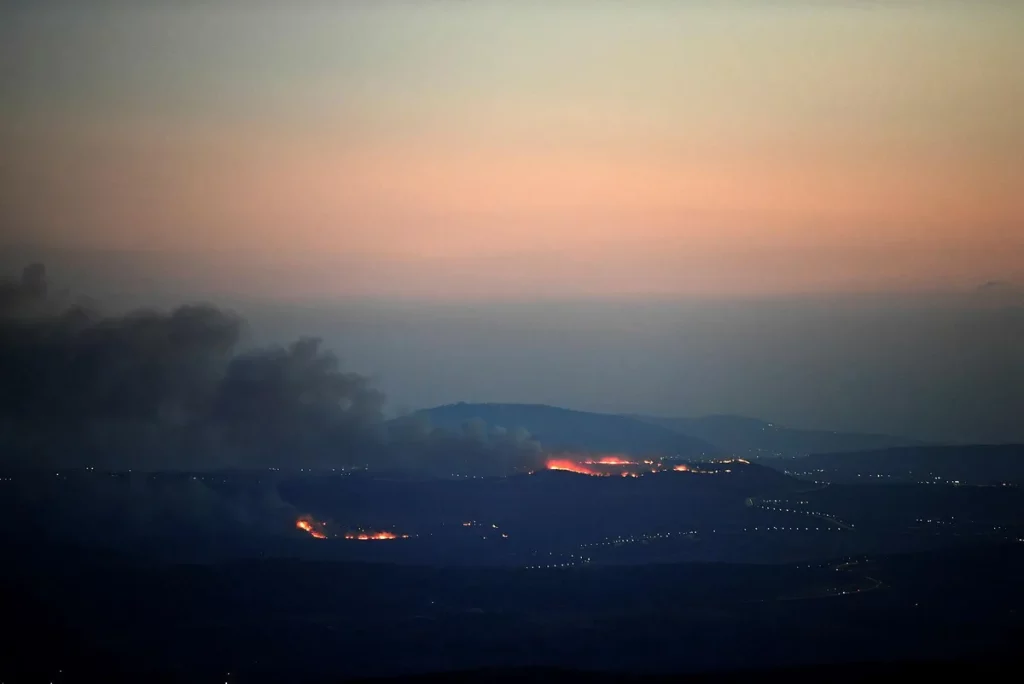

“There are areas that we have not yet been able to examine, mainly on the border with Lebanon. We’re preparing plans for the day after the war, but in many places nature knows how to recover on its own,” said Dr. Amit Dolev, ecologist for the authority’s northern district.
The most serious damage to nature over the long term has probably been caused by the IDF’s ongoing activity, often by carrying out work that causes damage to riverbeds. At some locations, the army built dirt roads inside nature reserves and set up positions there. In other places, it damaged facilities intended for hikers, such as marked trails.
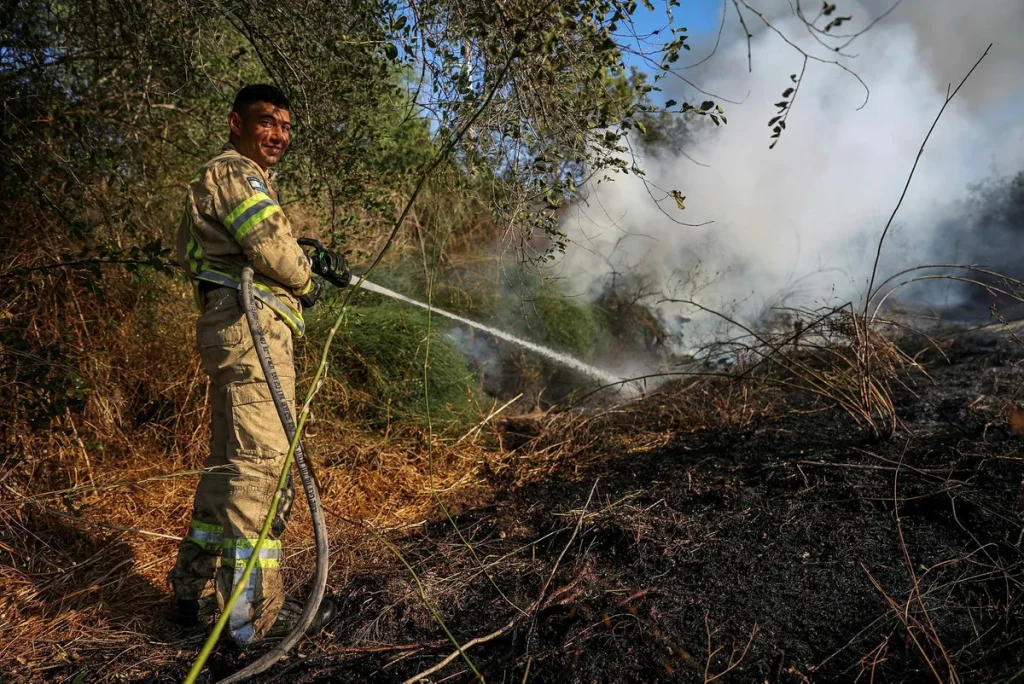
It said that among the nature reserves that suffered the most damage in the Golan Heights were Bashanit Ridge, Mount Avital, the Mas’ade Forest and Mount Bental. In the Upper Galilee, the damage has been most severe in the Nahal Hatzor, Mordot Harei Naftali, Mount Meron and Nahal Ziv reserves and the Achziv National Park. The Mount Hermon Nature Reserve also sustained major damage.
The war had a dramatic effect on hiking and sightseeing. The report showed that the number of Israelis visiting parks authority sites dropped by 38 percent over the past year from the same time in 2022-2023. There was a 95 percent drop in the number of non-Israeli visitors, who visit archaeological and historical sites, such as Masada and Caesarea, or to the sites important to Christianity in the Galilee and Lake Kinneret.
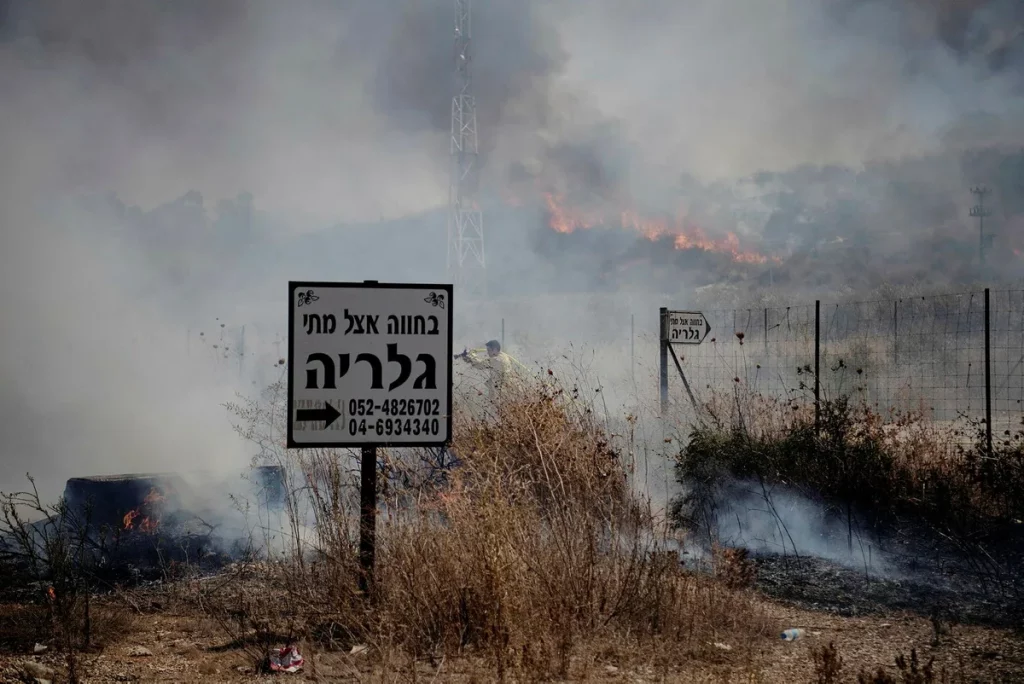

All told, eight of 16 sites in the north have been closed since October 7 and the rest are only open when the security situation will allow it. Overnight camping was down 47 percent in the past year, the report said.
As a result of the drop in visits, the authority suffered a sharp drop in its income, which will be difficult to cover the hundreds of millions of shekels needed to restore tourist facilities and nature, unless the government provides assistance.
“Despite everything, this year we opened new national parks and announced the creation of two more reserves,” said Raya Shurki, the authority’s director. “We hope that we’ll soon be able to get back to our regular work of conserving nature.”
=——————————————————
Since October 7, 84,000 acres of land in northern Israel ravaged by wildfires – YNET
Since start of war in Gaza, wildfires in Israel have burned 84,000 acres, mainly in the northern region and Golan Heights, as well as in the West Bank; Visitor numbers to nature reserves dropped 38%; restoring the damage ‘will take time’
Yaron Drukman|. 10.06.24
Since October 7, 2023, wildfires have ravaged roughly 84,000 acres across Israel, with about 48,000 acres scorched in the northern region alone. The Golan Heights bore the brunt, losing approximately 29,000 acres, including significant damage to the Yehudia Nature Reserve, which saw fires devastate around 3,800 acres. Most of these blazes were ignited by Hezbollah terrorists’ gunfire. Another heavily affected area is the West Bank, where approximately 25,000 acres burned, primarily due to arson.
Data from the Nature and Parks Authority reveal an unprecedented scale of wildfires this year compared to previous years. Between October 2022 and September 2023, about 11,000 acres burned in the northern region – less than a quarter of the area destroyed since the conflict began. The most extreme previous period, from October 2020 to September 2021, saw nearly 25,000 acres burned in the north, half of this year’s devastation.
From the start of the conflict until the end of last month, Israel’s nature reserves and national parks hosted approximately 5.94 million visitors, predominantly Israeli (98%). Visitor entry data from the conflict’s onset to the end of September shows a 38% decrease in Israeli visitors compared to the same period last year.
The most frequented sites this year include Palmachim Beach National Park (1.23 million visitors), Yarkon-Tel Afek National Park (370,000 visitors), Caesarea National Park (350,000 visitors), Gan HaShlosha National Park (310,000 visitors), Ein Gedi Nature Reserve (290,000 visitors), and Tel Ashkelon National Park (270,000 visitors), which surprisingly thrived despite being closed to visitors until January 2024.
Guy Cohen, Northern District Manager at the Israel Nature and Parks Authority, praised the rangers for dealing with the fires. “Our teams, especially in the Northern District, have been relentlessly combating the fires since the war began, particularly during the hot summer months. Our courageous and dedicated rangers tackle each blaze, often at great personal risk, to save every possible acre of protected nature, trails, or ancient heritage sites. While we’ve managed to contain fires and damage in many areas, vast lands were impacted. Once the battles subside, nature will need time to heal, and where restoration is necessary, we’ll be there to help.”
Dr. Amit Dolev, an ecologist for the Northern District at the Israel Nature and Parks Authority, said some forests will renew themselves. “The charred landscapes are expected to be covered with fresh green growth by early winter, and we hope many natural forest trees will recover and sprout from their scorched branches. There are areas, particularly near the Israel-Lebanon border, that we still cannot access to assess the impact on local flora and fauna.”
Regarding rehabilitation, Dolev added: “We’re preparing restoration plans for the post-conflict period. However, it seems the damage to nature is recoverable, and natural systems will know how to regenerate. Where recovery does not occur naturally, we’ll be there to assist.”
Ra’aya Shurki, CEO of the Israel Nature and Parks Authority, reflected on the past year. “This has been a complex and painful year marked by conflict, thousands of evacuees, deserted areas, closed sites and citizens kidnapped in Gaza, including one of our employees, Ohad Yahalomi, whom we await alongside all the other hostages. This year has been the most challenging for the Israel Nature and Parks Authority in its 60-year history. Many employees were called to reserve duty, sites in northern Israel were closed, and international tourism was virtually nonexistent. The authority mobilized to support the state, evacuees, and soldiers, protecting nature and heritage sites, preventing and extinguishing numerous fires, and restoring and preserving heritage sites, all while preparing closed sites and open areas for eventual reopening.”
“Despite everything, the authority opened three new national parks this year: Tel Lachish, Ein Yehuda, and Tel Kakun, and declared two new nature reserves, Kfira and Helmoniyot Ridge Nature Reserves. Renewal and conservation efforts continue even amid conflict, and we all hope to soon return to normalcy,” Shurki concluded.
https://www.ynetnews.com/environment/article/sysupqekke#autoplay
